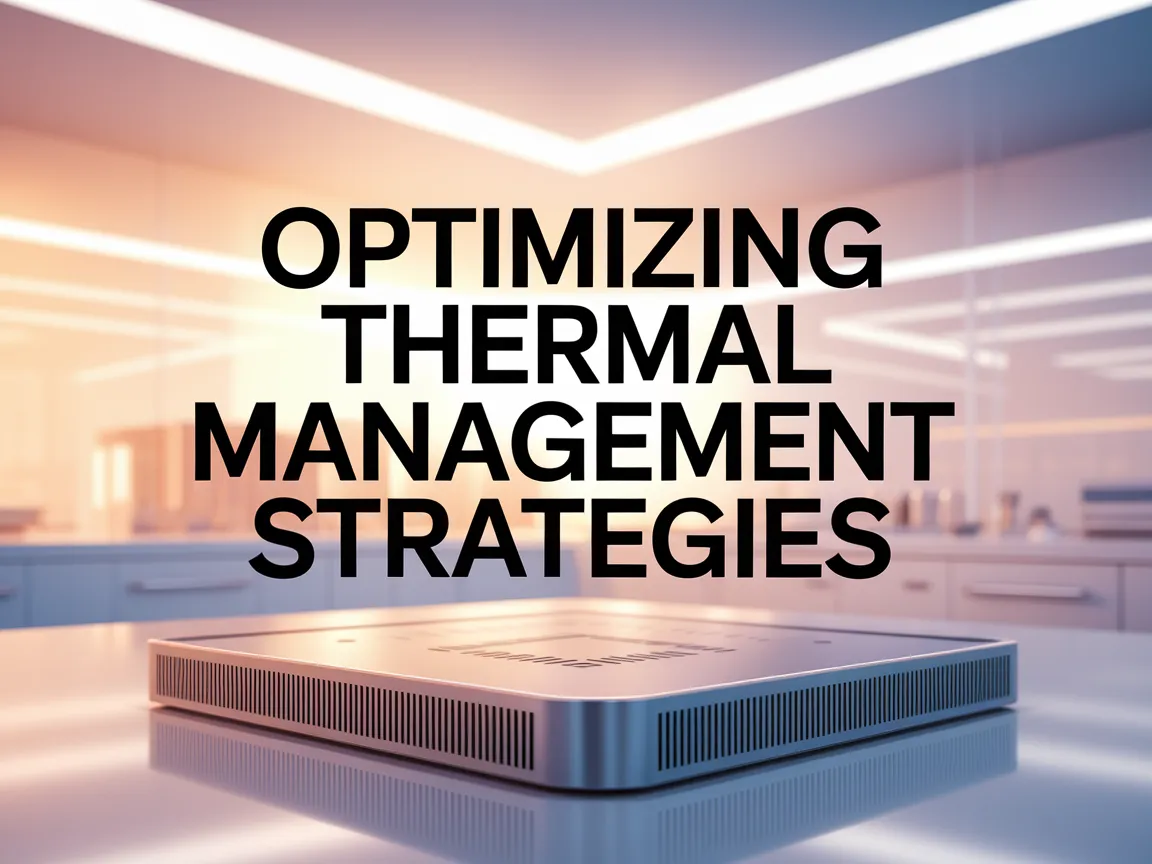Phase Change Material Integration in Modules: Smart Thermal Control for Batteries
Phase change material (PCM) integration embeds temperature-stabilizing substances within battery modules to absorb excess heat. These materials store thermal energy during phase transitions, typically between solid and liquid states at 25-45°C ranges.
PCM integration directly prevents cell overheating while maintaining performance consistency. This approach differs from traditional cooling by providing passive thermal buffering without external power.
We’ll examine PCM material science and thermal management benefits. The discussion includes practical integration techniques and overcoming design challenges.
Fundamentals Of Phase Change Materials in Battery Packs
Contents:
What Are Phase Change Materials (Pcms)?
Phase change materials (PCMs) are substances absorbing large thermal energy during phase transitions, typically solid-liquid shifts. Common battery PCMs include paraffin waxes, salt hydrates, and fatty acids melting between 25-45°C – aligning with lithium-ion operating ranges.
These materials store 5-14x more heat per volume than sensible storage mediums. Their latent heat capacity enables compact thermal management without moving parts. This efficiency is also a significant consideration when exploring lightweighting strategies for pack housings, which aim to reduce weight while maintaining performance. Implementing such strategies can lead to innovative designs that enhance overall system efficiency.
Core Principles Of PCM Thermal Energy Storage
PCMs absorb heat isothermally during melting through endothermic processes. At their specific phase transition temperature, they consume joule heat from batteries while maintaining near-constant temperature.
This thermal buffering occurs until the entire material changes phase. A typical paraffin PCM stores ~200 kJ/kg latent heat, compared to ~1.8 kJ/kg°C for aluminum heat sinks.
The Role Of PCM Modules in Battery Pack Design
Integrated PCM modules act as localized heat sponges between cells. They target hot spots directly where electrochemical reactions generate up to 40W/cell during fast charging. This efficient heat management is crucial in module electrical architecture design, ensuring optimal performance and longevity of the system. Proper integration of thermal management solutions can enhance the overall reliability and efficiency of electric modules.
These passive thermal control systems reduce peak temperatures by 8-15°C versus air cooling alone. Placement within modules ensures heat absorption occurs before thermal propagation starts.
Effective PCM integration minimizes thermal gradients across cells. This maintains ±2°C module uniformity, preventing premature capacity fade.
| PCM Property | Battery Requirement | Typical Value |
|---|---|---|
| Phase Change Temperature | Matches battery operating range | 30-40°C |
| Latent Heat Capacity | Maximum heat absorption | 150-250 kJ/kg |
| Thermal Conductivity | Rapid heat transfer | 0.2-0.5 W/mK (enhanced to >5 W/mK) |
Thermal Management Benefits Of PCM Integration
Phase change materials in battery modules provide passive thermal control during demanding operations. Their unique phase transition mechanism stabilizes temperatures without external energy input.
Enhanced Heat Absorption and Temperature Regulation
PCM integration absorbs up to 250 kJ/kg during melting transitions. This latent heat storage buffers rapid temperature spikes from 4C fast charging.
Modules maintain ±3°C uniformity during discharge cycles. Consistent thermal environments reduce lithium plating risks at sub-15°C conditions.
Preventing Thermal Runaway in Battery Modules
PCM systems delay cell-to-cell propagation by absorbing joule heat during failures. Tests show 8-12 minute containment windows for NMC811 chemistries.
This thermal management approach suppresses exothermic reactions. Critical temperatures exceeding 150°C are prevented through passive heat absorption.
Improving Energy Efficiency and Performance Consistency
PCM integration reduces active cooling load by 30-40%. Less fan power extends driving range in EVs by 5-7% under hot climate operation.
Capacity retention improves to 95% after 1000 cycles with thermal management. Voltage variance between cells drops below 50mV during high-current pulses.
Material Selection for Battery PCM Modules
Effective PCM integration requires matching material properties to electrochemical systems. Transition behavior dictates thermal management performance. When considering electrochemical systems, it is crucial to be aware of the risks associated with lithium batteries, specifically thermal runaway mechanisms. These mechanisms can lead to dangerous scenarios if the thermal management isn’t properly executed.
Key Properties: Latent Heat Capacity and Phase Transition Range
Target 180-220 kJ/kg latent heat for automotive applications. Paraffin waxes like RT44HC offer 200 kJ/kg at 44°C transition points.
Phase change must occur within battery’s 25-50°C operating band. Narrow 3-5°C melting ranges prevent partial phase transitions during cycling.
Organic Vs. Inorganic Pcms for Battery Applications
| Property | Organic PCMs | Inorganic PCMs |
|---|---|---|
| Examples | Paraffins, fatty acids | Salt hydrates, metallics |
| Latent Heat | 150-220 kJ/kg | 200-300 kJ/kg |
| Thermal Cycling | 5000+ cycles | 1000 cycles |
| Compatibility | Non-corrosive | May require encapsulation |
Organic types dominate due to chemical stability. Salt hydrates offer higher density but risk phase separation after repeated cycling.
Compatibility Considerations With Battery Chemistry
PCM selection must prevent electrolyte interactions. Fatty acids avoid lithium salt decomposition in LFP systems.
Venting mechanisms prevent pressure buildup in sealed modules. Nickel foam matrices contain expansion during phase transitions while maintaining thermal contact. Proper venting pathways are crucial in preventing dangerous situations, as they allow gases to escape safely during thermal runaway events. Ensuring effective thermal runaway gas venting pathways can significantly reduce risks associated with overheating.
Also See: Battery Pack Enclosure Design: Why Need Enclosure
Integration Strategies for Battery Pack Modules
Effective PCM integration demands strategic approaches balancing thermal performance and structural integrity. We focus on material containment and thermal pathways within module constraints. Proper thermal management system design principles are essential to optimize the effectiveness of these systems, ensuring reliable performance and longevity. Key design considerations include material selection, heat transfer efficiency, and structural stability.
Design Approaches: Encapsulation and Matrix Embedding
Encapsulation seals PCM within aluminum or polymer casings adjacent to cells. Matrix embedding disperses PCM within conductive scaffolds like expanded graphite or metal foam.
Both methods prevent leakage while maintaining volume change tolerance. Matrix designs achieve 3-8 W/mK effective conductivity versus 0.5 W/mK for pure PCM. When selecting materials for applications like busbars, the balance between conductivity and cost becomes crucial. Making the right choice can significantly impact both performance and budget, as detailed in busbar material selection conductivity vs cost.
Optimizing PCM Placement for Maximum Heat Transfer
Place PCM between prismatic cells or wrap cylindrical cells for direct thermal interface. Gap fillers containing 60-70% PCM by volume maximize surface contact, which is critical when selecting thermal interface materials for reliable heat transfer.
Inter-cell placement reduces thermal gradients to under 4°C across modules. Edge-cooling configurations prioritize high-risk zones near busbars. Effective busbar thermal management strategies are crucial for ensuring optimal performance and longevity of electrical systems. By implementing proper cooling techniques, heat can be dissipated efficiently, preventing damage and enhancing reliability.
Container Materials and Sealing Techniques
Aluminum composites withstand 200+ kPa pressure from PCM expansion. Laser welding creates hermetic seals for corrosive salt-hydrate PCMs.
Polymer films like ETFE provide chemical resistance for organic PCMs. Silicone gaskets accommodate 10-15% volume change during phase transitions. When considering the insulation of electrical components, the choice of materials becomes crucial. Busbar insulation materials such as mica, Teflon, and epoxy offer excellent durability and performance in challenging environments.
Retrofitting Pcms Into Existing Battery Systems
Existing packs gain thermal management through PCM-filled gap pads or phase change pouches. Adhesive thermal interface materials bond 2-5mm PCM layers to existing module surfaces. Optimizing the thickness of these thermal interface materials plays a crucial role in enhancing heat transfer efficiency. A well-calibrated thickness can significantly improve thermal performance and reduce potential overheating in electronic devices.
Retrofit kits add 8-15% weight but reduce peak temperatures by 12°C. Compatibility testing prevents electrolyte interaction with retrofit PCMs. Effective thermal management is essential, particularly when comparing module level and pack level approaches. Each method has distinct implications for battery performance and efficiency.
Simulation Methods: 1D/2D Thermal Modeling
1D models predict bulk behavior using equivalent thermal resistance networks. These simulations optimize PCM thickness in under 5 minutes per configuration.
2D COMSOL analyses map thermal gradients and phase fronts. Models validate heat flux distribution before prototyping, reducing development cycles by 40%. Effective coolant flow distribution strategies are essential for optimizing heat removal in complex systems. Analyzing these strategies can enhance overall performance and reliability in thermal management.
Simulations incorporate latent heat curves and anisotropic conductivity. They predict melt fraction progression during 3C+ fast-charge scenarios.
Closing Thoughts
Phase change materials offer transformative potential for battery thermal management. Their ability to absorb heat during phase transitions provides passive temperature control that outperforms traditional cooling methods.
From organic paraffins to salt hydrates, material selection impacts performance. Proper integration through encapsulation or matrix embedding ensures effective heat transfer while maintaining pack integrity.
For more insights on optimizing battery thermal systems, explore our technical resources at Battery Pack Design. We cover advanced topics from material properties to full-scale implementation strategies.



